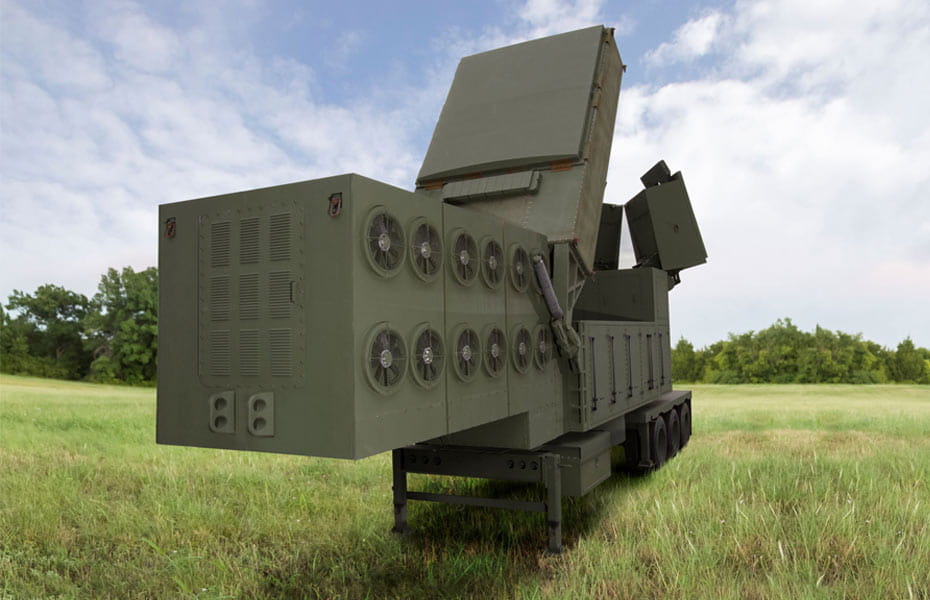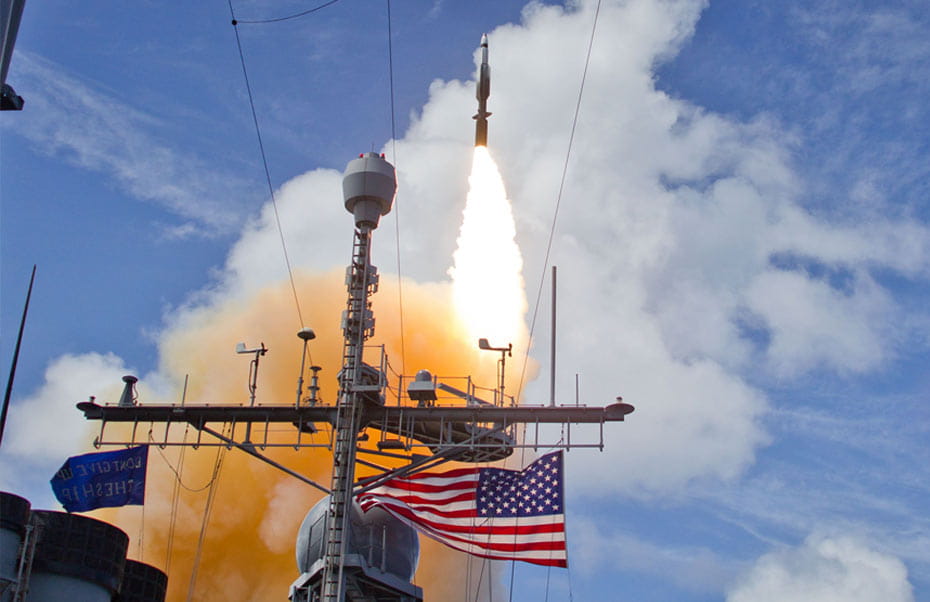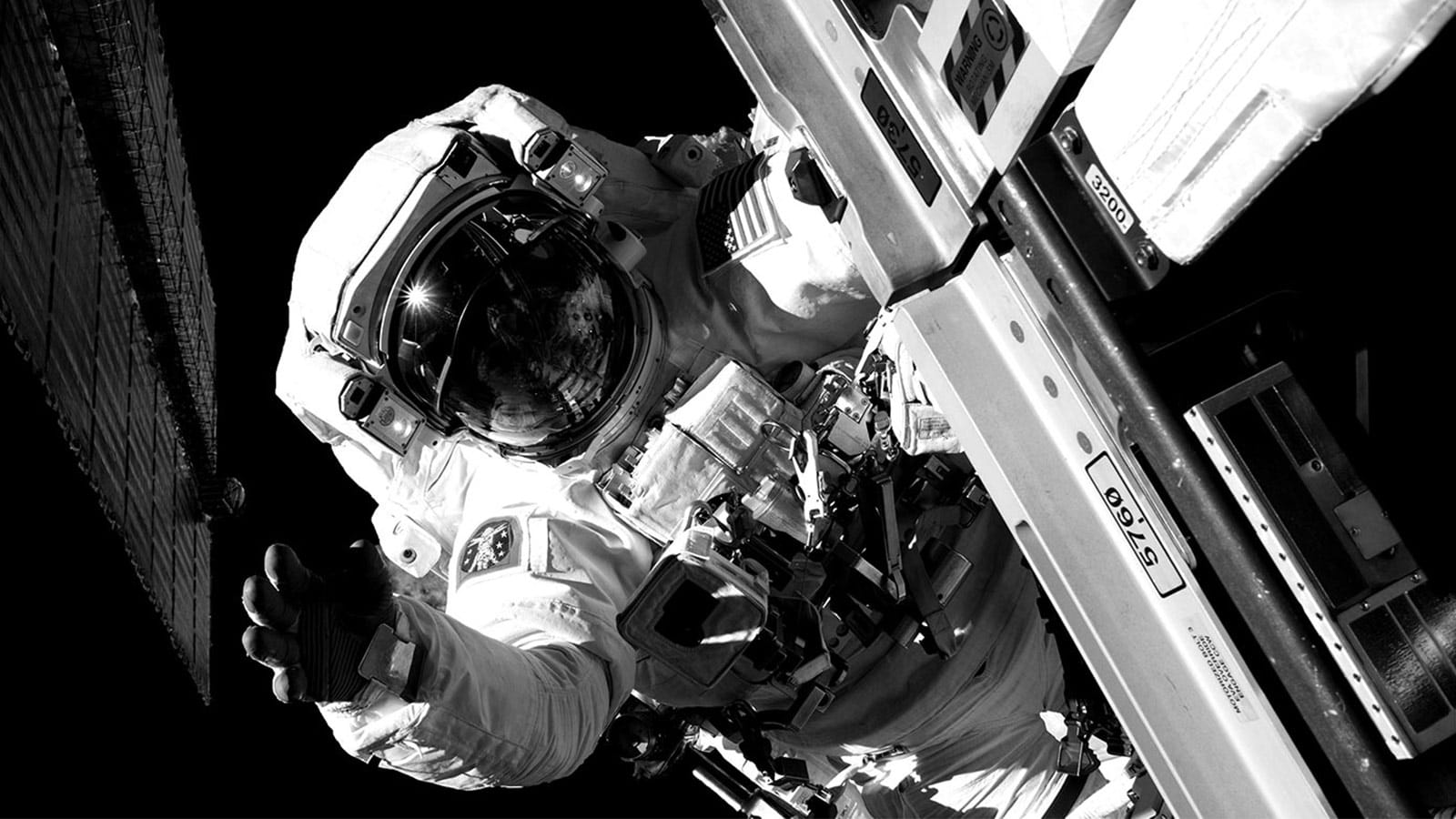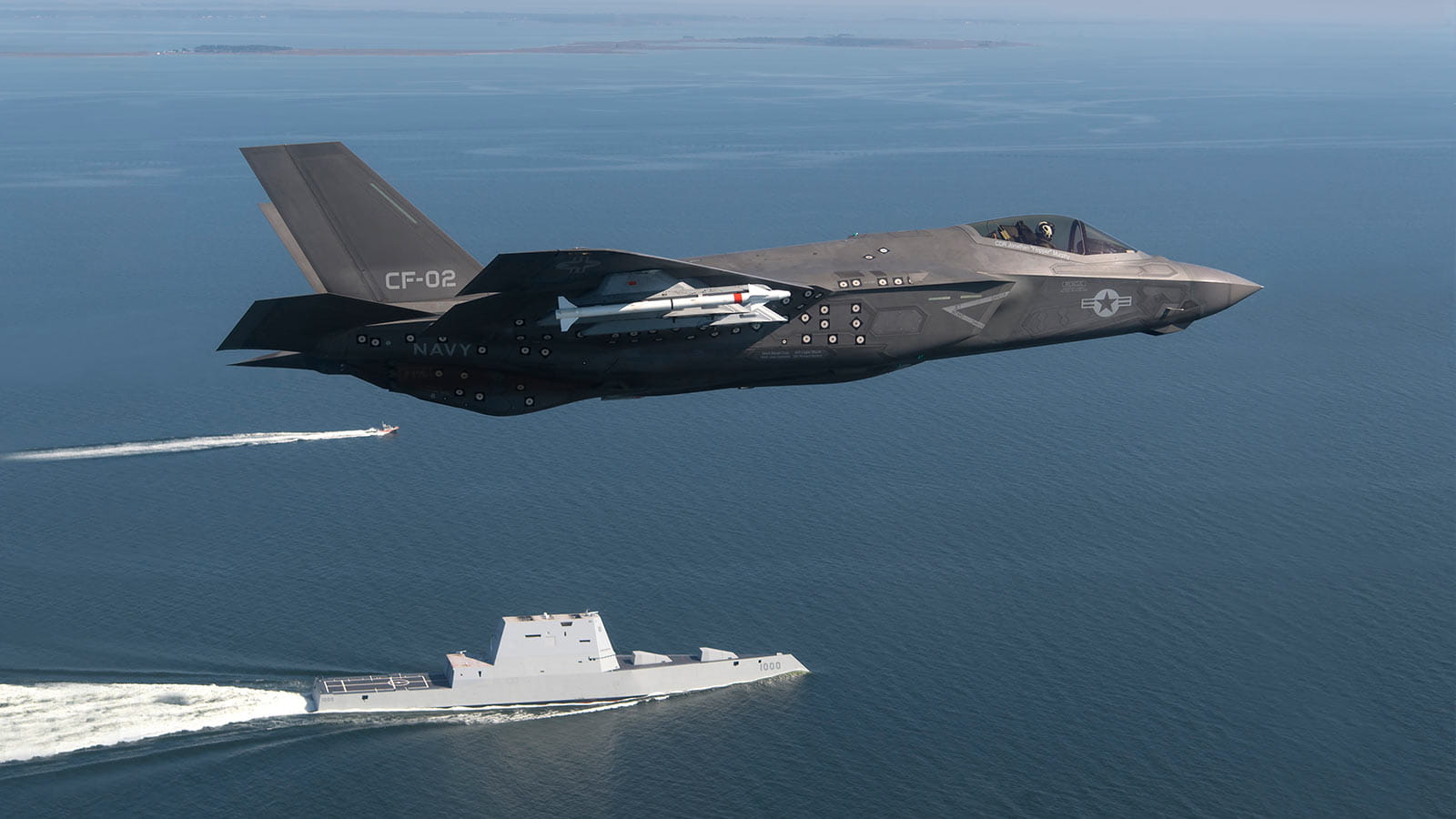A look at our work on Earth, in the air, and in space
These awards finalists illustrate Raytheon Technologies’ range and depth
Five Raytheon Technologies programs – three in missile defense, one in unmanned aerial systems and one in space – have been named as finalists for Aviation Week Program Excellence Awards. And two of them took home the top honors.
The Aviation Week recognition is noteworthy, but to us, it’s really only the start of the story.
When you look at the crop of finalists all together – as well as the company’s Aviation Week Laureates winners – you quickly get an excellent idea of the range of systems Raytheon Technologies produces, and the ways those products contribute to a the future of space exploration, a safer and better-connected airspace and a more secure world.
NASA EMU
You see it and you think “spacesuit,” but really the Extravehicular Mobility Unit is more like the world’s smallest spacecraft.
The EMU provides everything astronauts need to survive in the vacuum of space – oxygen, water, ventilation, thermal control, carbon dioxide removal and communications. It consists of more than 18,000 parts; Collins Aerospace, a business of Raytheon Technologies, is responsible for several aspects including maintenance, refurbishment, hardware development, logistics and real-time mission expertise.
The program won Aviation Week's Supplier System Sustainment Programs award, in recognition of its success in extending the EMU’s expected service life through the use of data.
“Every suit that comes back from the International Space Station is inspected and tested and those insights have led to the ability to lengthen the duration from two, to four, to six years on the ISS (International Space Station,)” said program director Greg Stonesifer.
LTAMDS
In missile defense, one of the critical areas of concern is the “lower tier,” a slice of airspace accessible to threats including rockets, artillery, mortars, unmanned systems and cruise missiles. Raytheon Missiles & Defense is building the U.S. Army’s new radar to stay ahead of those threats, and it’s called the Lower Tier Air and Missile Defense Sensor, or LTAMDS.
LTAMDS is a 360-degree radar powered by gallium nitride semiconductors. Its circuits, built at Raytheon’s DoD-accredited Category 1A Trusted Foundry, can emit signals up to five times stronger than their forerunners.
The program was named a finalist for Aviation Week’s Original Equipment Manufacturer Design and Development Award – an acknowledgment of how quickly they worked, basing the new sensor on existing technology to help the U.S. Army address the rapid development of threats in the lower tier.
“Anyone can now turn a drone into a missile or bomb,” said Bill Patterson, the program director. “The Army also couldn’t wait the years that a traditional radar development contest would take. The LTAMDS offering from Raytheon Missiles & Defense provided the solution, giving the Army advanced technology that keeps up with evolving threats and that protects and keeps our service members and international partners safe.”

The Lower Tier Air and Missile Defense System, made by Raytheon Missiles & Defense, is among several Raytheon Technologies programs being recognized at the 2020 Aviation Week Program Excellence Awards.
EKV
The Exoatmospheric Kill Vehicle protects the U.S. against long-range ballistic missile attacks by slamming into and destroying incoming threats while they are still in space, safely outside the Earth’s atmosphere.
The EKV, built by Raytheon Missiles & Defense, seeks out its target using multi-color sensors, a cutting-edge, onboard computer, and a rocket motor that helps it steer in space. It guides to the target and, with pinpoint precision, destroys it using nothing more than the force of a massive collision. No traditional warhead is necessary.
The program was named a finalist for Aviation Week’s Supply Chain Design and Development award, in part for its use of the Agile software development method.
“Through Agile development, the team focused on addressing the most critical capability enhancements and software improvements, solving difficult problems through incremental solutions, continuously tested against evolving threats,” senior program director Roy Donelson said. “Additionally, by using Agile predictive metrics, such as Team Velocity, Story Point Burn-up and Cumulative Value Flow, the Team was able to increase productivity by identifying and removing roadblocks and inefficiencies.”
GBDAA SkyVision
The ability to see and avoid other aircraft is one of the cornerstones of aviation safety and air traffic management in the National Airspace System. With unmanned aerial systems, it becomes challenging to conduct flight maneuvers beyond visual line of sight without ground observers, chase planes or technology capable of detection.
To solve that problem, Raytheon Intelligence & Space has developed GBDAA SkyVision, a capability for the Ground-Based Detect and Avoid system the business originally built for the U.S. Air Force. SkyVision uses FAA-certified air traffic management automation to comply with the agency’s “see and avoid” rules. The SkyVision project took that capability and housed it within a mobile recreational vehicle, enabling it to travel to wherever it’s needed – essentially, wherever drones happen to be flying.
The team was named a finalist for Aviation Week’s Special Projects award, an acknowledgment of both the novel problem the team is solving, and its collaboration with multiple stakeholders including the U.S. Department of Transportation Volpe Center, the U.S. Air Force, the Ohio Department of Transportation, MITRE Corporation and the FAA.
“The SkyVision team proved that through extraordinary collaboration, holding safety as sacrosanct, applying certified ground-based technology with innovative enhancements can empower government and industry’s ability to move forward with efforts to embrace and safely integrate UAS during this newest and most exciting age of aviation in history,” said Jack McAuley, director of air traffic systems automation for Raytheon Intelligence & Space.
SM-3 IB
Like the Exoatmospheric Kill Vehicle, the SM-3 interceptor destroys its targets with sheer impact, only this time those targets are short- to intermediate-range ballistic missiles. It’s the only ballistic missile interceptor that can be launched from sea, with the Aegis Ballistic Missile Defense System, or land, using the Aegis Ashore Weapon System.
The program won Aviation Week's Original Equipment Manufacturer Production award, in part because the team rallied around a clear production goal: “52 + 4,” or 52 planned missile deliveries in 2019, with an additional four.
“One of the things that make the SM-3 BLK IB program unique is the people that work on it and the passion they share for the BLK IB missile and its mission to protect our country and allies,” program director Sharon Walk said. “These individuals have varied skillsets, backgrounds, locations and perspectives that all contribute to the multifaceted approach to completing tasks and solving problems.”

An SM-3 Block IB interceptor launches from the USS Lake Erie during a test. The SM-3 program was honored at the 2020 Aviation Week Program Excellence Awards.
Laureate awards
In addition to the Program Management Excellence Awards, Raytheon Technologies – specifically, Pratt & Whitney – is also represented in Aviation Week’s 2020 Laureates, which recognize “great achievers in aerospace and aviation.”
They include:
- The business’ next-generation PT6-E series engine, recognized for being “the first general aviation turboprop to feature dual-channel integrated electronic propeller and engine control;”
- Former business president Robert Leduc, recognized for coming out of retirement to lead service introduction and production ramp-up of the GTF engine – one of the business’ signature products;
- The PW800 engine, which powers the Gulfstream G500 and G600 business jets;
- The APS 3240 auxiliary power unit, part of the C-390 Millennium military transport jet;
- The GTF engine and APS3200 auxiliary power unit, part of the Airbus A321LR jetliner.



